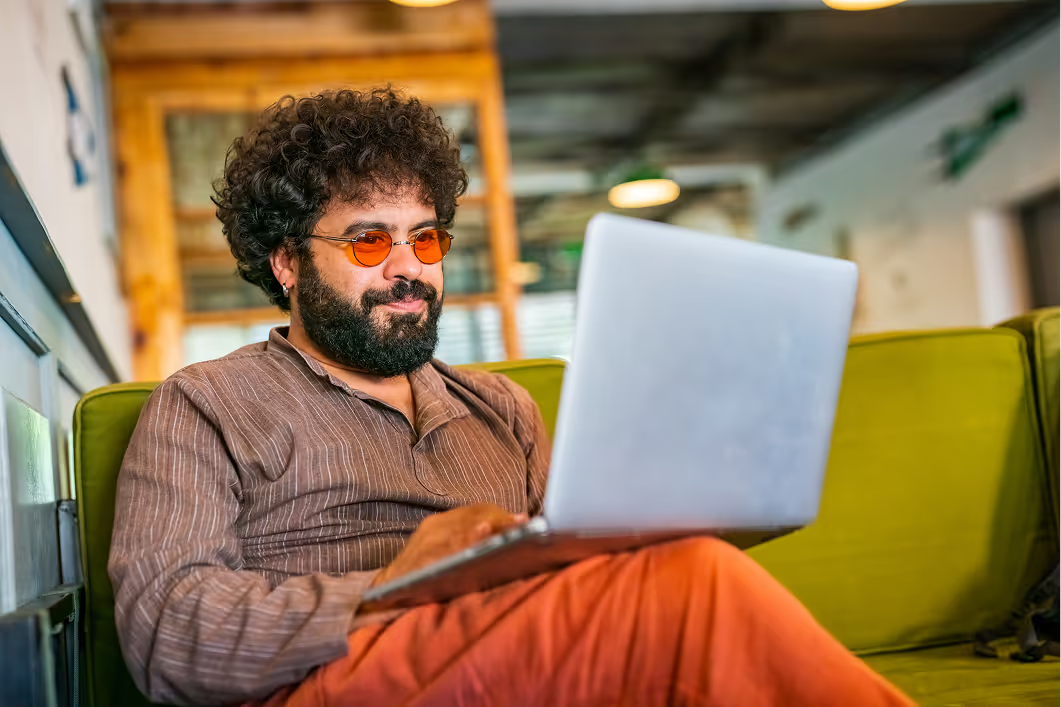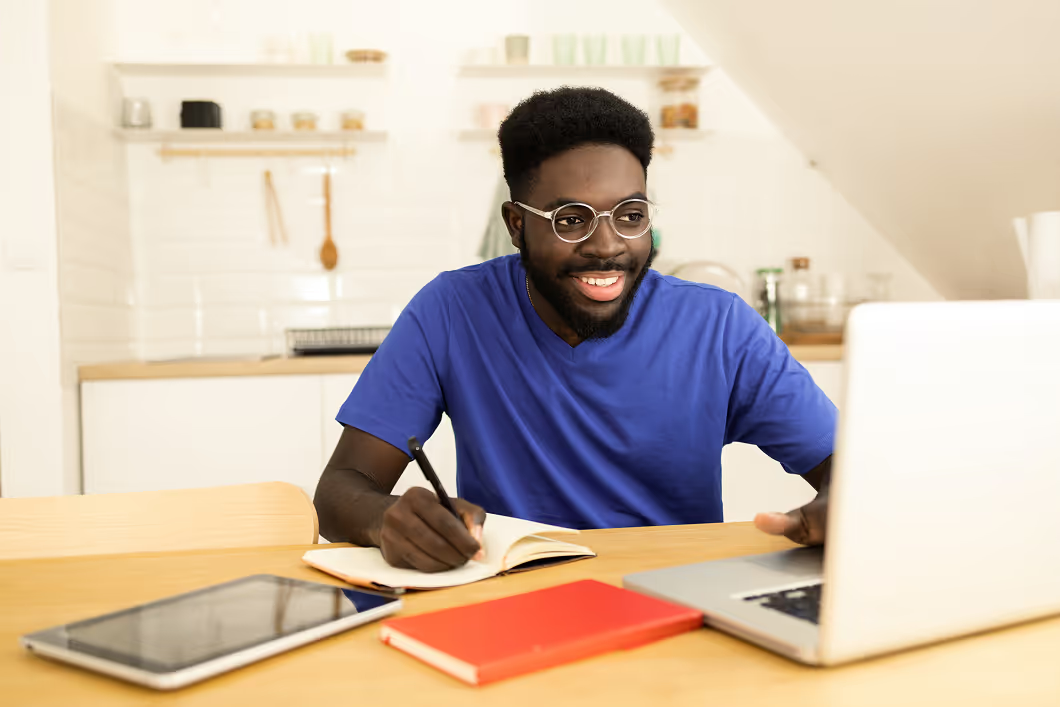Why gathering anonymous employee feedback is so important

Discover Workleap Officevibe's benchmark report on 12 key employee engagement metrics

This might be a shock, but your organization’s leaders don’t know everything. They may be experts at guiding work and creating trusting relationships, but there’s always something they could do better.
To learn what “something” they should focus on, leaders should be listening to their workforce. Enter: anonymous employee feedback surveys. These confidential questionnaires allow leadership to gather brutally honest insights about what’s working and what’s not.
In this guide, we show how to draft a focused anonymous survey and discuss why they’re so important. Let your teams’ voices be heard, and leverage the resulting feedback to build an even better organization.
Benefits of anonymous surveys: Building a healthier workplace
Surveying employees is an excellent way of gaining insights into their experience, as they allow teams to offer direct feedback about what they’re facing day-to-day. Anonymous feedback forms can be especially effective, as anonymity allows employees to answer without fear of negative repercussions.
This confidentiality also allows organizations to survey employees on sensitive subjects that they wouldn’t usually be comfortable discussing. For example, individuals can share unfiltered thoughts on the company's culture and leadership, or their happiness with compensation levels and benefits.
Downsides of anonymous employee feedback
All feedback is useful, even painfully honest critiques of the company’s shortcomings. But this isn’t to say there aren’t downsides to anonymous feedback.
Anonymity means you can’t ask any follow-up questions if an answer is vague or lacks context. For example, someone might express dissatisfaction with the company’s culture, but not go into detail about why. This makes it difficult for leaders to find solutions to the problems they’re facing. Workleap Officevibe offers a solution to this problem by allowing managers to respond to anonymous feedback in a message chain, keeping the conversation going while ensuring the employee’s identity stays hidden.
Disgruntled employees can also use anonymous employee feedback to voice their anger rather than offer constructive criticism. Take these insights with a grain of salt. Strong emotions can cloud minds, so strongly worded answers might not be very constructive.
How to collect anonymous employee feedback effectively
Here are a few tips to avoid the potential pitfalls of anonymous employee feedback and perfect your process.
Use anonymous survey platforms
Employees are more likely to trust that answers are anonymous if you use a third-party platform. In addition to confidentiality, these platforms often come with handy extra features, like customizable questions and virtual suggestion boxes.
Workleap Officevibe is an ideal choice for small to medium organizations. The platform allows you to automate survey delivery, preserve anonymity, and analyze insights using a suite of convenient tools.
Clearly communicate the commitment
Without prompting specific answers, carefully explain how employees should format responses to ensure you receive useful data. Encourage them to be as honest as possible and to clarify any points.
Be sure to also state approximately how long the survey will take to complete. This will help avoid employees offering rushed, poorly thought-out answers. A platform with a progress bar so people can gauge how far along they are can be particularly helpful. Allowing workers to save their answers and come back to them later can be another great choice.
Be specific
Specific questions receive specific answers. Avoid vague and non-committal comments by asking pointed questions on distinct aspects of employees’ experience. For example, instead of just asking about work satisfaction, offer a series of questions on work-life balance, compensation, and diversity, equity, and inclusion (DEI).
Tips for creating effective anonymous employee survey questions
Asking the right questions is key to getting the most out of anonymous employee feedback surveys. Muddled wording or time-consuming formats can discourage people from responding or lead to useless data. Ensure your feedback form hits the mark with these tips.
Keep surveys short and focused
Many companies send out extensive annual employee feedback questionnaires, but there’s a better alternative. Instead of employees having to cast their minds back several months, short, frequent employee engagement surveys offer actionable data on current events. These focused questionnaires should do a deep dive on a single subject, surfacing niche but relevant employee feedback.
Shorter surveys also help prevent survey fatigue, the exhaustion employees feel when answering too many long questionnaires.
Avoid vague or “yes or no” questions
“Yes or no” questions like “Is the company culture good or bad?” won’t provide you with insightful answers. Instead, use language that encourages thoughtful responses. A better question would be, “If you could describe company culture in one word, what would it be and why?”
Including a combination of closed questions with multiple-choice answers and open questions allows you to gather both quantitative and qualitative feedback. Think carefully about what you want to learn before drafting questions, and ensure your language is specific to limit irrelevant answers.
Utilize answer scales
In addition to feedback-oriented questions, scaled questions like “rate your manager’s active listening skills from 1 to 10” allow you to gather quantitative insights. This numerical data helps you calculate metrics like your employer net promoter score (eNPS) or employee satisfaction index (ESI).
Work with purpose
Employees are more likely to engage with a survey if they know what it’s for, so explain the purpose of an anonymous survey to your workforce when you send it out. Respondents should believe that questions are being asked in their best interests.
Be sure to detail what you’ll do with the results, too. If workers know action will be taken, they’ll offer fuller answers.
Share insights and action plans
Sharing survey results with employees after they’ve been analyzed shows them that you’re listening, boosting trust in the process. When displaying these results, protect anonymity by displaying graphs and charts that highlight themes and don’t single out any one response.
Demonstrate to employees that you’re actively using their feedback by highlighting any areas of improvement you’ve spotted and sharing a detailed action plan of next steps. When people know they’re being listened to, they’re more likely to take part in future surveys.
Choosing the right anonymous employee feedback tool
Not all questionnaire tools support the necessary level of confidentiality needed for an anonymous employee feedback survey. Look for platforms that guarantee anonymity and boast additional features like:
- Customizable questions
- Integration with your other HR software
- Varied survey options, like suggestion boxes, pulse surveys, and feedback forms
- Reports that include charts, graphs, and other visuals
- Analytics tools, like Workleap Officevibe’s AI-powered insights
- Feedback loops (the opportunity to gather rolling data, not just one-off surveys)
3 top anonymous employee feedback platforms
Here are three trusted employee feedback survey platform options to get you started.
Workleap Officevibe
Workleap Officevibe is ideal for small to medium teams, with completely anonymous, customizable surveys. Officevibe supports constant contact with weekly pulse surveys and dashboards showcasing up-to-the-minute feedback and employee engagement trends. Plus, Workleap’s AI capabilities crunch data, analyzing employee responses and highlighting areas in need of improvement and intervention. What’s more, managers can confidentially follow up on survey responses without jeopardizing anonymity.
Officevibe is part of a suite of tools that support the employee experience. With Workleap, you can track performance and generate insightful manager feedback. You’ll also enjoy seamless integrations with workplace tools like Slack and Teams.
SurveyMonkey
SurveyMonkey leverages AI to quickly create custom surveys and categorize the results. The platform allows users to gather respondents’ data or allows them to retain anonymity. Note that SurveyMonkey does save users’ IP addresses for 13 months before deleting them.
Google Forms
Google Forms is a free, customizable survey tool. It features basic data compilation features, like graphing, to help you analyze the results of your questionnaires. Users can turn off the email collection option to make surveys anonymous, but your network may still gather some identifying data.
Analyze anonymous employee feedback with Workleap
Whether you’ve sent out dozens of anonymous employee surveys or are creating your first, Workleap can help. With templates and completely customizable features, you’ll gather feedback to tackle key issues at your organization.
And those are just the basics. Workleap Officevibe’s AI-driven analytics feature presents legible data and suggests routes for improvement. Plus, Workleap’s secure messaging feature allows you to follow up anonymously, gathering even clearer information for your action plan. Build trust between leadership and employees and push your organization to become its best version yet.
FAQs
Are employee surveys really anonymous?
The level of anonymity with employee feedback surveys depends on the tools you use. Results are completely confidential when you use an anonymous survey platform that doesn’t store emails or IP data. Otherwise, there may be ways to trace who sent which answers.
How do you deal with negative employee feedback anonymously?
To respond to negative feedback without breaking anonymity, use a tool with a confidential messaging feature. Workleap Officevibe allows you to talk to the person who provided this opinion without uncovering that person’s identity.
What are the most common mistakes when gathering anonymous employee feedback?
The main mistake is not acting on anonymous employee feedback after it’s been gathered. The point of asking your workforce to fill out surveys is to discover insights that drive change. Employees may feel frustrated if they spend time thoughtfully answering questions only for nothing to change. If they don’t see the point, they may refuse to participate in future surveys.
Give HR and managers the clarity, confidence, and connection to lead better every day.


%20(1).avif)


.avif)
.avif)








